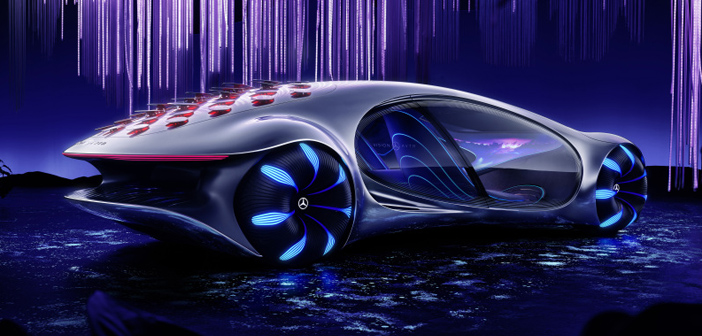The latest in Mercedes-Benz’s Vision series of concept cars was revealed at CES 2020. Its name, Vision AVTR, refers not only to a collaboration with the team behind the Avatar movies, but also to Advanced Vehicle Transformation.
The autonomous concept vehicle majors on sustainability in its battery design and vegan interior and embodies the vision of Mercedes-Benz designers, engineers and trend researchers for mobility in the distant future.
The 110kWh, graphene battery-powered Vision AVTR is said to have been designed using a new, holistic approach that combines the interior, exterior and UX disciplines from the first sketch. The innovative UX in the nature-inspired interior is button-free and features functions and menus that are projected onto the driver or passenger’s hand.
Mercedes-Benz says that focusing on efficiency in Vision AVTR is as much about powering the myriad electronic functions as it is about the powertrain. Energy consumption per computing operation will become even more important in the coming years, the company says, with the growth of sensors and artificial intelligence in the automotive industry. The neuro-inspired approach of the Vision AVTR, including so-called neuromorphic hardware, promises to minimize the power consumption of sensors, chips and other components to a few watts. Their energy supply is provided by the cached current of the integrated solar plates on the back of the Vision AVTR. The 33 multi-directionally movable surface elements act as “bionic flaps”.
Meanwhile four, near-wheel electric motors contribute to “the best possible” active safety. Each wheel can be driven separately and according to the driving situation. The front and rear axles can be driven in the same or opposite ways, meaning that the Vision AVTR can move sideways by approximately 30°, unlike conventional vehicles, in a crab-like movement.


